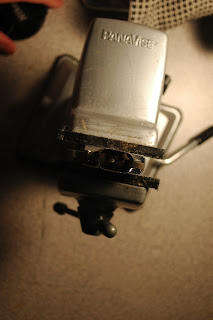So this is going to be one of those not-so-technical posts.
I bought a watch this week at Sears.
I didn't realize this when I bought it, but the Decade brand watch looks extremely similar to...

I engraved my initials TSJW on the flip clip. I usually wear my watch on the inside of the wrist, and there's nothing to show off on the outside if I do this. So I felt like engraving my initials on the outside makes it feel less wrong wearing my watch on the inside.

I bought a watch this week at Sears.
I love this picture.
The gold watch on the far left is the one I've been wearing for a while. I practically built the thing.
I bought a fake Casio A159W watch, then bought a Casio F-91W and replaced the fake A159W with the innards from the F-91W.
So that way I have a gold watch that won't break if I submerse it in water or drop it on the ground.
I bought the oyster watch band to fit onto the watch. It's a pretty much a unique watch because I custom built it.
The silver watch on the top is a classic Casio A168W. Nothing too special about it.
The watch that I bought this week is the two tone analog watch to the left. That's what I bought for 60% off of $35, so I bought it for $15.
Chain shows up in everything.
I didn't realize this when I bought it, but the Decade brand watch looks extremely similar to...
a Rolex Datejust
http://www.rolex.com/watches/datejust/m116233-0149.html
a $12,000 watch. I was thrilled to realize this because I love buying knockoffs. It's flashy in a sort of ironic way.
Here are some main similarities:
- Fluted bezel (that gold ring around the whole watchface)
- twotone
- Jubilee bracelet
- Gold crown (that thing to adjust the time)
Some main differences
- One is 1000x more expensive
- Decade's bracelet is not solid metal
- Decade's watch does not have date
- Decade's watch is based on quartz movement, while Rolex is mechanical
- Decade is just really cheap in all aspects. It's actually a terrible watch.
It's so cheap and that's why I love it. This Friday I didn't want to write college essays so I took some time to engrave my watch.
As seen on my Snapchat story:
It's so embarrassing to wear now.
So that's just some background on the watch.
Whenever I buy something, I always end up thinking about taking it apart and modifying it (its inevitable).
A few days ago I got the watch wet and had to take it apart to dry out the moisture.
I realized how spacious the inside of the watch was... the quartz movement mechanism took up only an eight of the total space inside the watch... That gave me ideas.
I realized how spacious the inside of the watch was... the quartz movement mechanism took up only an eight of the total space inside the watch... That gave me ideas.
The idea:
I honestly really don't like wearing analog watches. They give me a good sense of how much time is left in the day, but I spend at least five seconds reading it in order to understand what time it is actually. On a digital watch the numbers would just show up in X:XX form, but on this watch I have to spend a good amount of time decoding the placement of the hands.
Plus, the gold hands blend in with the gold face and everything is just so shiny and it makes it IMPOSSIBLE to read the time.
I love wearing digital watches, but they aren't flashy enough.
The Casio watch I have right now isn't solid metal: It's metal plated and then gold plated, which means that after wearing it for a year the gold wears off (it already has).
Literally no one sells a solid metal gold-plated digital watch at an affordable price.
So here's the idea: replace the quartz movement in the watch with a digital watch module.
Sorry, I don't have any picture of this right now (because taking apart watches is actually the worst), but imagine the Decade watch with a display like this:
Right now there are a few problems, and a few solutions that I've been thinking of.
- Fitting the innards from another digital watch into the Decade watch
- find a small enough watch, and 3D print a holder that will make it fit snuggly so it doesn't shift around.
- What do you do about the four buttons on a digital watch when you only have a hole for one crown on an analog watch case?
- I still need to figure this out.
For now I need to put off this project to concentrate on college applications, but I think this is a worthwhile project to look into. It'll probably be more difficult than my Zippo remote project, because this time I'm dealing with something a little more expensive than a lighter.
Hopefully when I come back to this idea a few months later I would have made some progress.











































































































